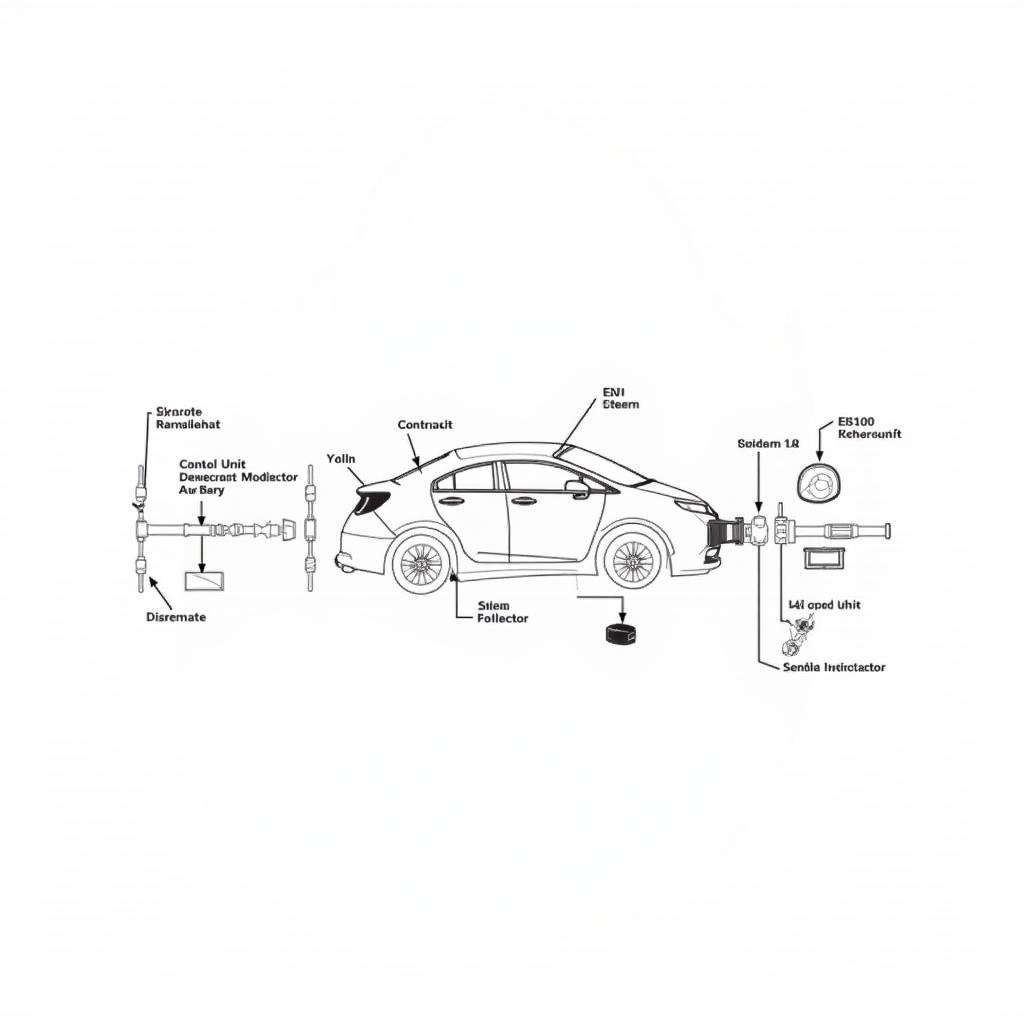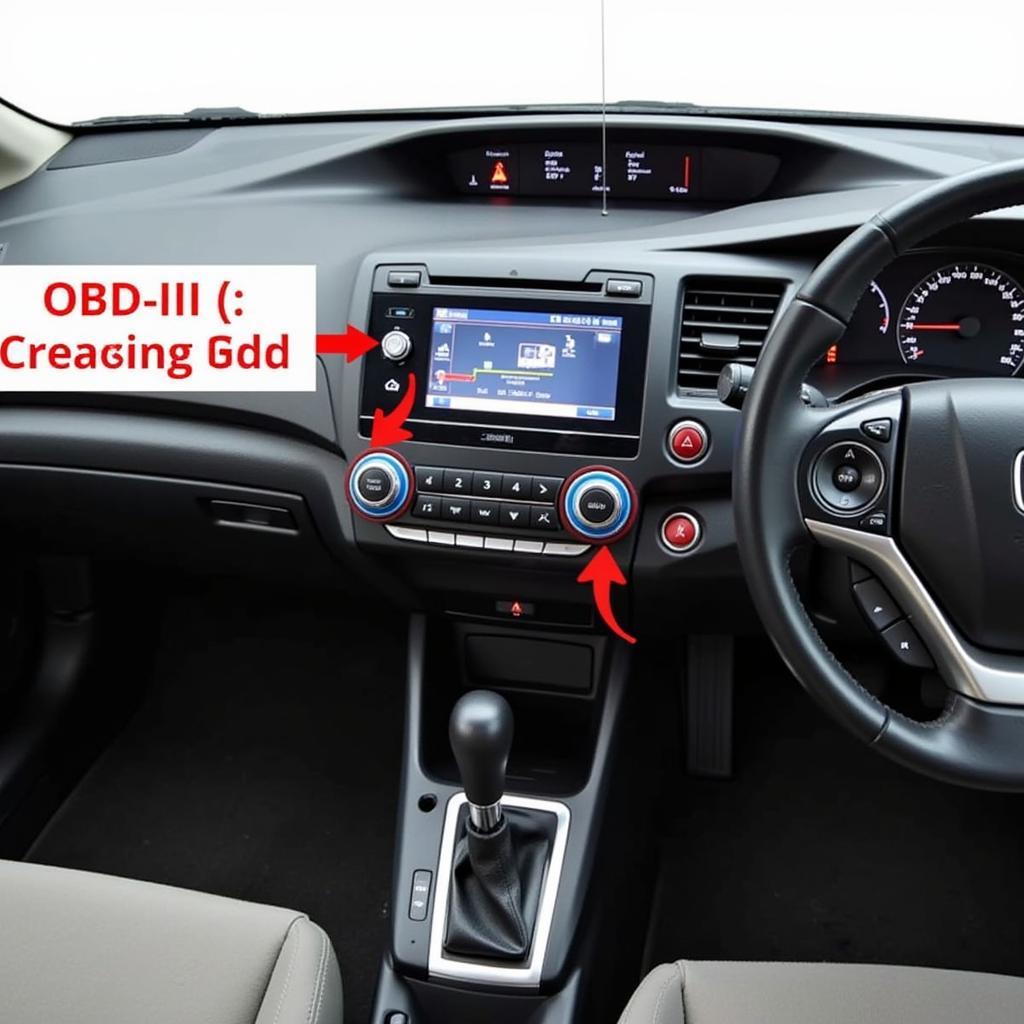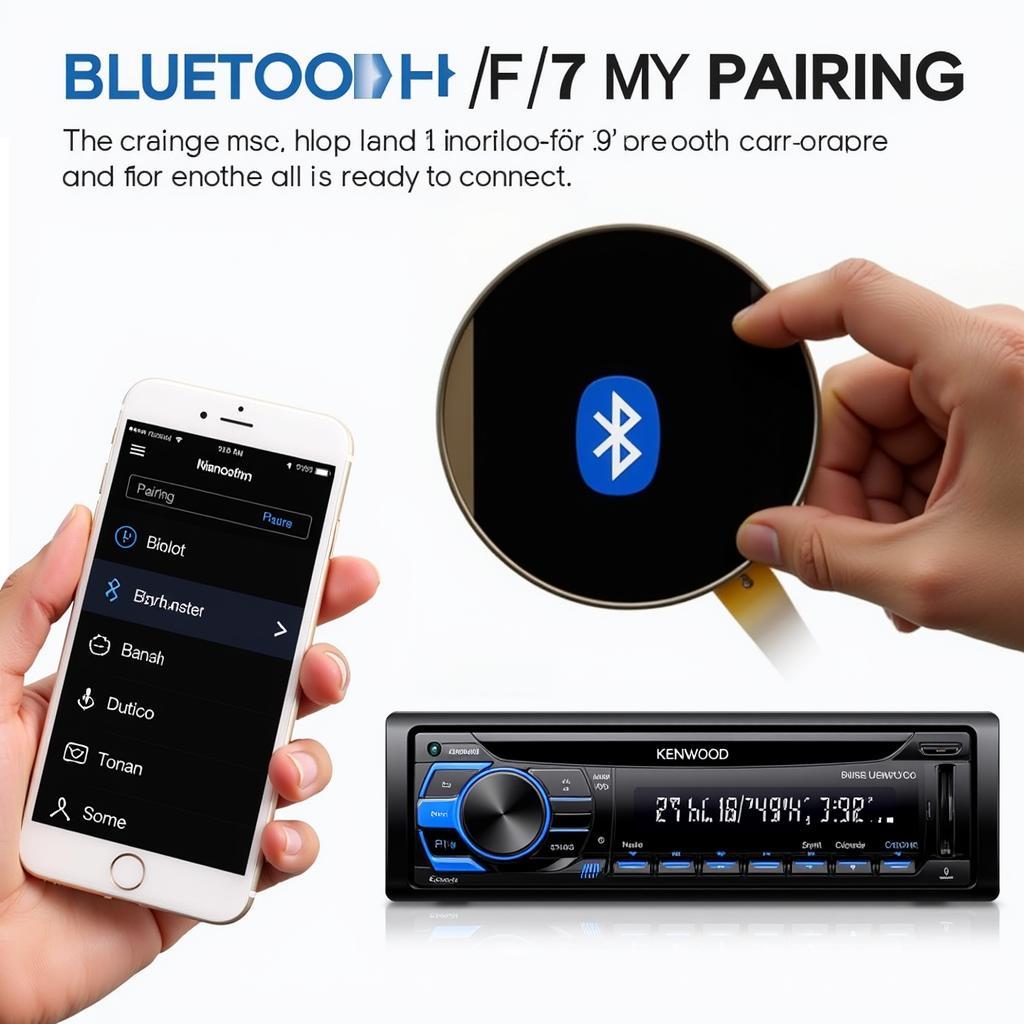The 2013 Honda Civic’s early brake warning feature is designed to alert you to potential hazards and help you avoid collisions. It’s a valuable safety system that can significantly reduce your stopping distance, especially in emergency situations. This article will delve into the intricacies of this feature, explaining how it works, common issues, and troubleshooting tips.
How the 2013 Honda Civic Early Brake Warning System Works
The early brake warning system in your 2013 Honda Civic relies on a complex interplay of sensors and algorithms. It constantly monitors your speed, the distance to the vehicle in front, and your braking input. When the system detects a potential collision, it activates visual and audible warnings to prompt you to take action. The system doesn’t actually apply the brakes itself in the early warning stage, but it prepares the braking system for a quicker response should you apply the brakes. This pre-charging of the brakes can significantly reduce the car’s stopping distance. The system is designed to be highly sensitive, erring on the side of caution to maximize safety.
 2013 Honda Civic Early Brake Warning System Diagram
2013 Honda Civic Early Brake Warning System Diagram
Common Issues with the 2013 Honda Civic’s Early Brake Warning
While the early brake warning feature is a sophisticated safety system, it’s not without its quirks. One common issue is false alarms. These can occur due to a variety of factors, such as dirty or obstructed sensors, software glitches, or even driving habits. Another potential problem is a malfunctioning system that fails to activate when needed. This can be caused by faulty sensors, wiring problems, or issues with the control unit. Understanding these potential problems can help you troubleshoot and address them effectively.
“Regular maintenance and periodic checks of the sensor systems are crucial for ensuring the proper functioning of the early brake warning feature,” says John Miller, a certified automotive technician with over 20 years of experience specializing in Honda vehicles.
Troubleshooting Your 2013 Honda Civic’s Early Brake Warning Feature
If you’re experiencing issues with your 2013 Honda Civic’s early brake warning feature, there are several steps you can take to troubleshoot the problem. First, check the sensors for any obstructions or dirt. Clean them carefully with a soft cloth. Next, inspect the wiring for any damage or loose connections. If you’ve recently had any work done on your car, ensure that all connections related to the braking system are secure. Finally, consider having a professional diagnostic scan performed to identify any underlying software or control unit issues.
 Cleaning the 2013 Honda Civic Brake Warning Sensors
Cleaning the 2013 Honda Civic Brake Warning Sensors
Why is My 2013 Honda Civic Early Brake Warning Light Flashing?
A flashing early brake warning light typically indicates a more serious problem with the system. This could be a faulty sensor, a wiring issue, or a problem with the control unit itself. It’s important to address this issue promptly by having your vehicle inspected by a qualified technician.
“Ignoring a flashing brake warning light can compromise your safety and potentially lead to more extensive and costly repairs down the line,” advises Sarah Chen, an automotive electrical engineer with expertise in advanced driver-assistance systems.
Can I Disable the 2013 Honda Civic Early Brake Warning Feature?
While technically possible to disable certain aspects of the system through diagnostic tools, it’s generally not recommended. Disabling this safety feature can increase your risk of accidents. If you are experiencing persistent issues with false alarms, it’s best to consult with a qualified technician to diagnose and repair the problem rather than disabling the entire system.
 2013 Honda Civic Diagnostic Port Location
2013 Honda Civic Diagnostic Port Location
Conclusion
The 2013 Honda Civic early brake warning feature is an important safety system designed to help you avoid collisions. Understanding how it works, common issues, and troubleshooting steps can empower you to maintain this crucial system and ensure your safety on the road. If you experience persistent problems, consult a qualified technician to diagnose and repair the issue promptly. Remember, a properly functioning early brake warning system can be the difference between a near miss and a serious accident.
FAQ
- What does the early brake warning light look like? It’s typically an amber or red warning light, often shaped like a car with brake lines behind it.
- How often should I have my 2013 Honda Civic’s brake system inspected? It’s recommended to have your brakes inspected at least once a year or every 12,000 miles, whichever comes first.
- Can weather conditions affect the early brake warning system? Yes, heavy rain, snow, or fog can sometimes interfere with the sensors, leading to false alarms.
- Is the early brake warning system the same as the Collision Mitigation Braking System (CMBS)? While related, they are distinct systems. The early brake warning provides alerts, while CMBS can automatically apply the brakes.
- What should I do if the early brake warning system activates frequently? Have the system inspected by a qualified technician to diagnose the underlying cause.
- Can I replace the sensors myself? While possible, it’s recommended to have a qualified technician perform this task to ensure proper calibration.
- Will aftermarket parts affect the early brake warning system? Using non-OEM parts can sometimes interfere with the system’s functionality. It’s best to use genuine Honda parts for replacements.

